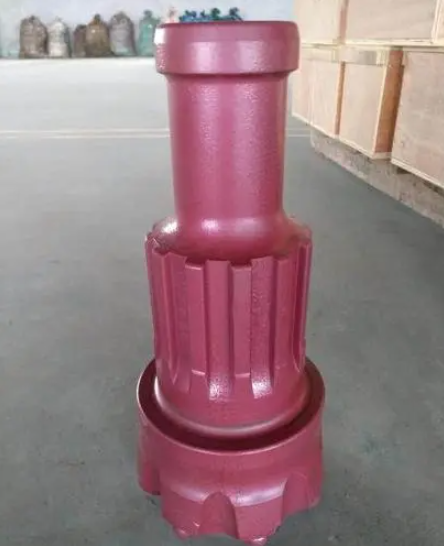Learn about DTH Hammers
Related products Link:
The low-pressure down-the-hole hammer is widely used in geotechnical engineering for drilling various medium-hard and high-hard tough rocks with poor drill ability.
Working principle of the hammer: When the impact stroke starts, the piston and the valve plate are in the upper position, and the compressed air enters the upper chamber of the cylinder through the radial hole of the valve cover and valve seat, pushing the piston to move downward at high speed to impact the drill bit. When the piston travels to the spline groove of the bushing and is closed, the pressure in the lower chamber starts to rise, so the center hole at the upper end of the piston leaves the gas distribution rod, so that the upper chamber is ventilated to the atmosphere, the pressure drops, and the working stroke ends. When the piston hits the tail of the drill bit, the valve plate changes direction due to the pressure difference between the upper and lower parts, and the piston repeatedly returns to the stroke.
What is the reason why the down-the-hole hammer does not impact?
There is a cylinder and a piston inside the impact drill. When the machine is rotating, the piston moves back and forth in the cylinder under the drive of the crankshaft, forming high air pressure, which will make the drill bit of the impact drill produce an instantaneous impact force. If you can do it yourself, you can unscrew the screw at the handle and the back of the impact drill, and then check whether there is a lack of lubricating oil inside, and then check whether the sealing ring of a piston is worn. If these two problems are eliminated, the impact drill will not The impact problem is basically solved.





